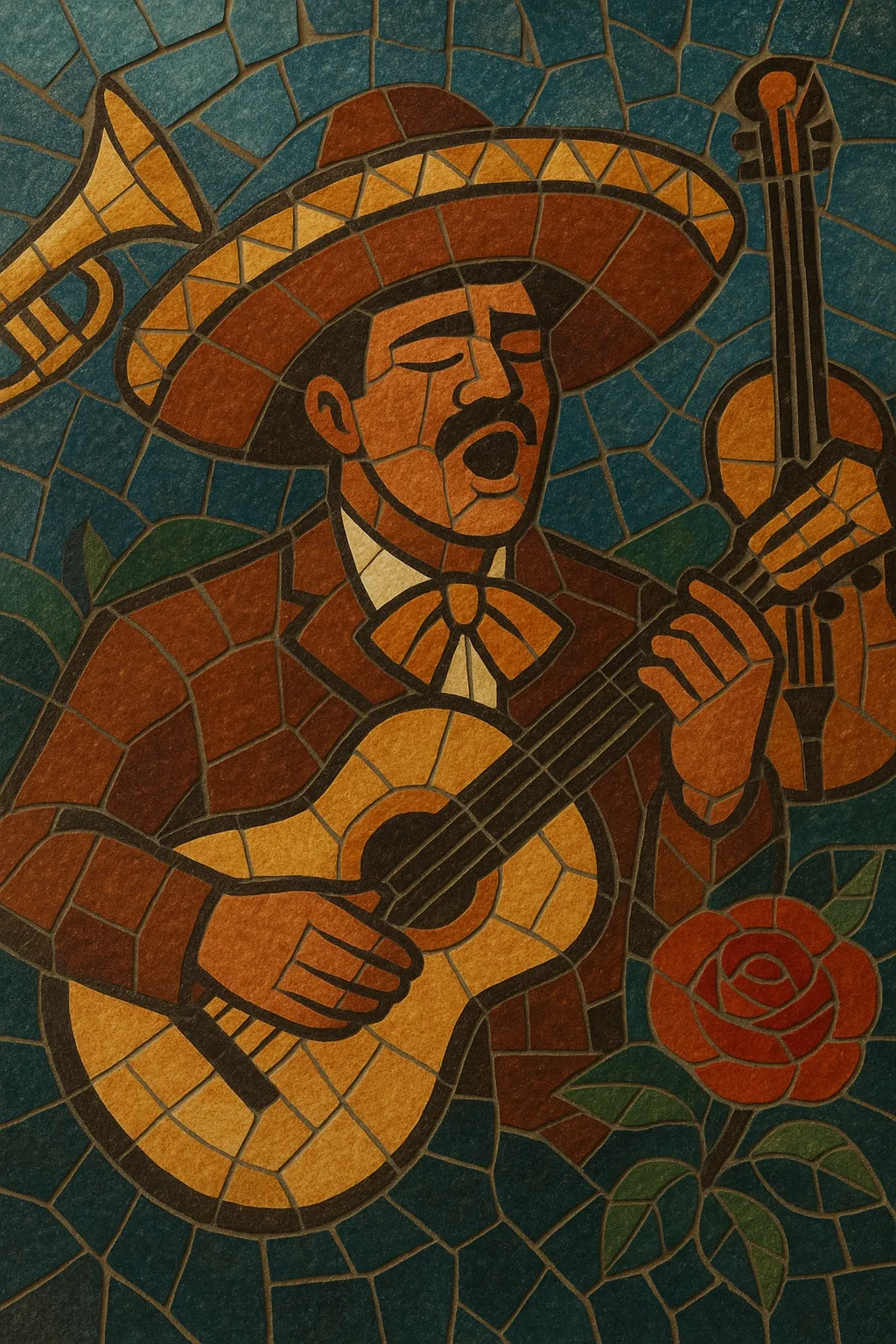Ranchera is a traditional Mexican song style rooted in rural life, love, patriotism, and everyday stoicism. It is most commonly performed with a mariachi ensemble featuring violins, trumpets, vihuela, and guitarrón, though solo voice and guitar or accordion-led groups also appear.
Musically, rancheras are strophic songs with memorable, singable melodies and straightforward harmony (often I–IV–V with occasional secondary dominants). Rhythms alternate between 3/4 (vals ranchero), 2/4 (polka-like), and 4/4 (march-like) feels. Vocal delivery is passionate and ornamented, frequently using belting, slides, and the characteristic grito (a cathartic shout) to heighten emotion.
Lyrically, rancheras deal with romance, heartbreak, longing, pride in the homeland, and the dignity and hardships of rural life. They are a pillar of regional Mexican music and a cultural emblem within and beyond Mexico.
Ranchera emerged in the aftermath of the Mexican Revolution as an expression of rural identity and national sentiment. Drawing on corrido storytelling, regional son styles (notably son jalisciense and huapango), and European dance meters (waltz and polka), it coalesced into a distinct vocal song form often accompanied by early mariachi groups.
The Golden Age of Mexican cinema popularized ranchera across the Spanish-speaking world. Charro-singer film stars like Jorge Negrete, Pedro Infante, and Javier Solís helped standardize the dramatic vocal aesthetic, strophic forms, and mariachi-backed arrangements (violins, trumpets, vihuela, guitarrón). Songwriters such as José Alfredo Jiménez supplied a canon of enduring repertoire focused on love, honor, and heartbreak.
Ranchera influenced and intermingled with norteño, banda, and Tejano scenes, leading to hybrids like bolero ranchero and ranchera with accordion or brass-band backing. Iconic interpreters including Lola Beltrán, Lucha Villa, and Vicente Fernández further elevated the vocal tradition and performance style. The genre became a core pillar of what is now called Regional Mexicano.
New interpreters and crossovers (e.g., Alejandro Fernández) maintain the tradition while modern production and touring bring ranchera to global stages. Though trends in Regional Mexicano diversify (sierreño, banda, corridos), classic ranchera repertoire and style remain central touchstones for audiences and performers.


